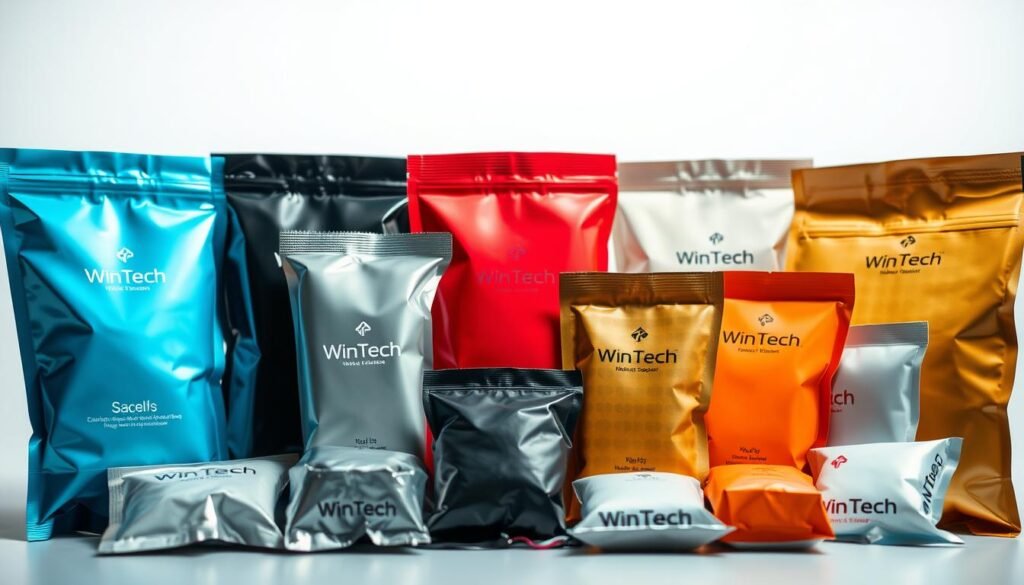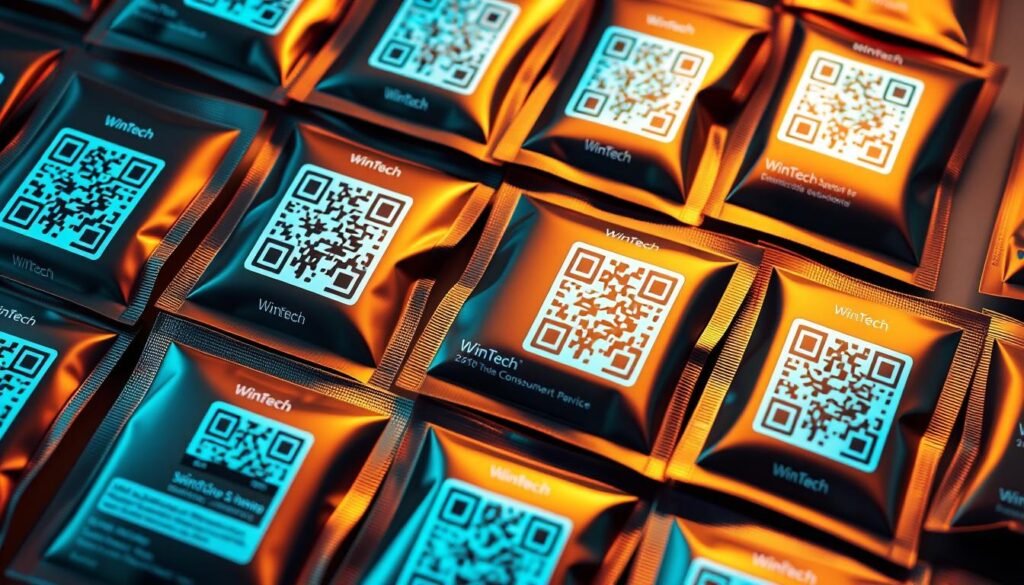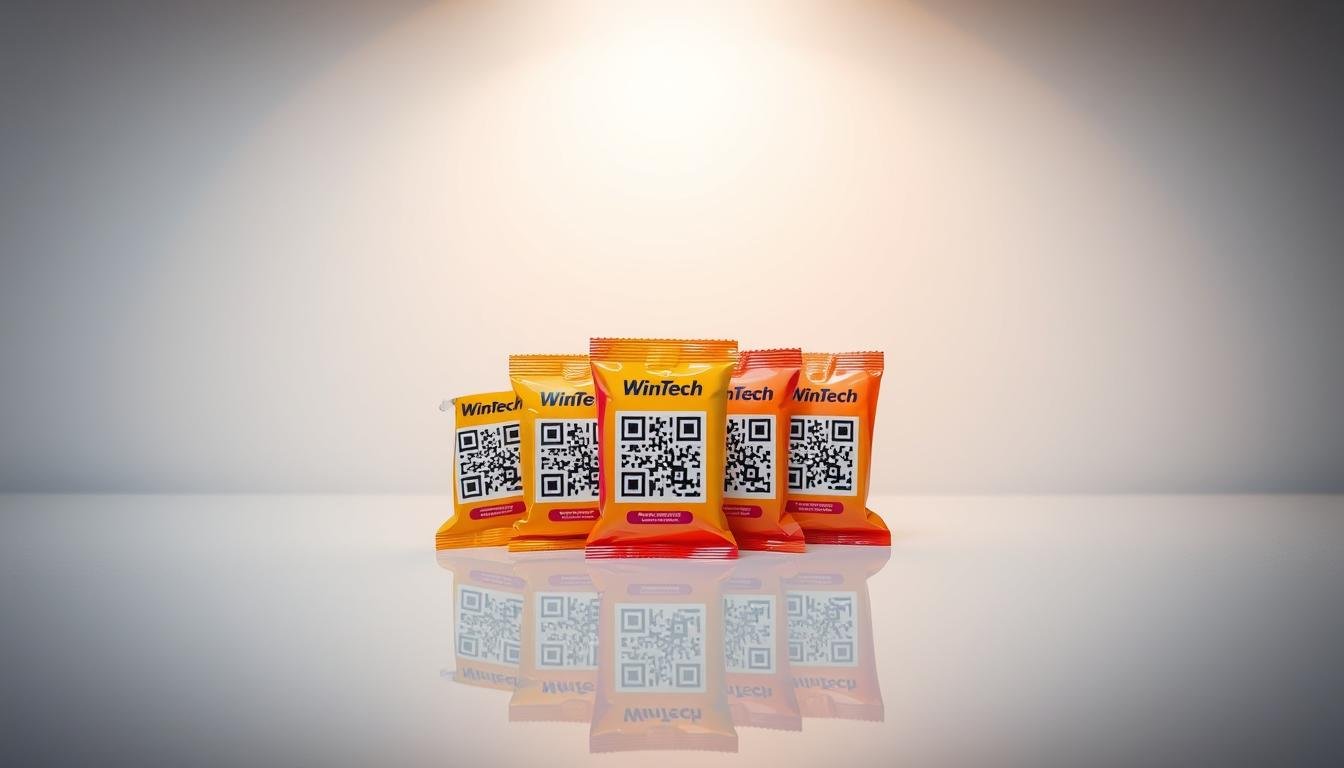Have you ever wondered how a tiny packet could transform your brand’s connection with consumers? What are sachets becoming in the modern digital marketplace? Wintech Package is revolutionizing small sealed pouches by integrating cutting-edge QR code technology that turns simple single-use packets into interactive marketing platforms.
What are sachets beyond traditional packaging? These compact solutions are now digital gateways that bridge physical products with immersive online experiences. By embedding QR codes, brands can instantly communicate product details, offer exclusive content, and track consumer interactions in ways never before possible with standard single-use packets.
The evolution of what are sachets demonstrates a remarkable shift in consumer engagement strategies. Modern packaging isn’t just about containment—it’s about creating meaningful connections that extend far beyond the physical product.
Key Takeaways of What are sachets
- QR codes transform sachets into interactive marketing tools
- Single-use packets now offer digital engagement opportunities
- Brands can track and personalize consumer interactions
- Small sealed pouches become more than just product containers
- Digital technology enhances traditional packaging experiences
What are Sachets: Definition and Key Features
What are sachets – Sachets are small, flexible packaging solutions that have revolutionized product delivery across multiple industries. These compact containers offer a convenient way to package and distribute various products, from tea and perfume to food and cosmetics.

Understanding the unique characteristics of sachets helps you appreciate their versatility in modern packaging solutions. Unlike traditional packets, sachets provide more precise portion control and enhanced product protection.
What are sachets – Materials Used in Sachet Production
Manufacturers create sachets from specialized materials designed for specific product needs:
- Multilayer plastic films
- Aluminum-based composites
- Biodegradable polymer blends
- Paper-based laminated materials
Common Uses of Sachets Across Industries
Sachets have become essential in various sectors, offering unique packaging solutions:
| Industry | Sachet Application |
|---|---|
| Food | Condiment packaging, instant coffee, spice mixes |
| Cosmetics | Sample skincare products, single-use masks |
| Beverages | Tea sachets, powder drink mixes |
| Pharmaceuticals | Medical powder doses, supplement packets |
Advantages of Sachet Packaging
Choosing sachets offers multiple benefits for both manufacturers and consumers:
- Portion Control: Precise product measurements
- Extended Shelf Life: Enhanced product preservation
- Cost-Effective: Reduced packaging materials
- Convenience: Easy to carry and use
The evolution of sachets continues with innovative features like QR codes, which provide additional product information and enhance consumer engagement.
What are Sachets: Enhancing the Consumer Experience
Sachets are transforming how brands interact with consumers through innovative packaging solutions. These compact containers are no longer just about product delivery but have become powerful marketing tools that engage customers in unique and interactive ways.

Modern consumers seek more than just products – they want experiences. Sachets for travel and biodegradable sachets are meeting this demand by offering convenient, sustainable packaging options that tell a compelling brand story.
The Role of QR Codes in Sachet Marketing
QR codes have revolutionized sachet packaging by creating instant digital connections between physical products and online experiences. Brands can now share:
- Detailed product information
- Promotional content
- Sustainability certifications
- Interactive brand narratives
Benefits of Interactive Features in Sachets
Interactive sachets provide multiple advantages for both brands and consumers:
| Consumer Benefits | Brand Benefits |
|---|---|
| Instant product details | Enhanced customer engagement |
| Easy access to instructions | Trackable marketing metrics |
| Transparent ingredient information | Cost-effective communication channel |
Examples of Brands Using QR Codes on Sachets
Leading companies are embracing this technology to create memorable brand interactions. From beauty products to food supplements, QR codes are turning simple sachets into gateway experiences that connect digital and physical worlds.
The future of packaging is interactive, sustainable, and customer-centric – and sachets are leading the way.
What are Sachets: Future Trends and Innovations
The world of what are sachets is rapidly evolving, with cutting-edge technologies and sustainable solutions transforming small sealed pouches into intelligent packaging systems. As consumer awareness grows, manufacturers are pushing boundaries to create more environmentally friendly and interactive packaging solutions that meet modern market demands.
Sustainability has become a critical focus in sachet production. Biodegradable sachets are emerging as a game-changing innovation, addressing environmental concerns while maintaining product integrity. Companies like Wintech Package are developing advanced materials that decompose naturally, reducing the ecological footprint of these compact packaging solutions.
Sustainability in Sachet Production
You’ll notice significant advancements in eco-friendly packaging technologies. Innovative materials such as plant-based polymers and compostable compounds are replacing traditional plastic-based sachets. These sustainable alternatives not only protect products but also demonstrate a commitment to environmental responsibility.
Emerging Technologies in Sachet Design
Smart packaging technologies are revolutionizing how you interact with small sealed pouches. QR codes now serve multiple purposes beyond simple product information – they provide authentication, track product origins, and prevent counterfeiting. This technology transforms sachets from mere containers into interactive digital experiences that enhance consumer trust and engagement.
The Potential of Personalization in Sachets
Personalization is the next frontier in sachet design. Brands are developing customizable packaging solutions that cater to individual preferences, allowing consumers to have a more tailored product experience. With advanced printing and digital technologies, what are sachets are no longer just packaging – they’re becoming personalized communication tools that connect directly with consumers.

